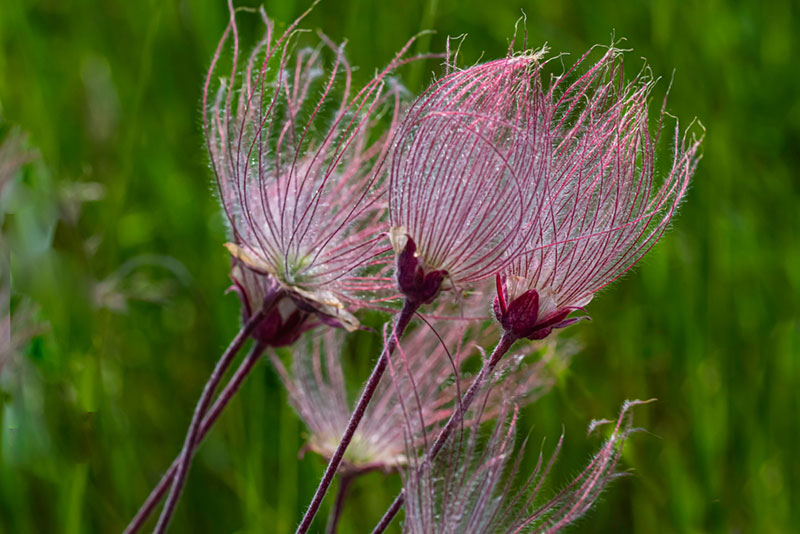
Also known as old man’s whiskers, prairie smoke is a wildflower perennial that will add some interest to an outdoor garden. It has green foliage that changes to more traditional autumn colors during the fall. The leave will change to shades of purple, red, and orange until it becomes winter, then the foliage will change again to a dark burgundy color. During the spring, small pink blooms will appear.
This is one of the earliest blooming plants that you will find for your garden. After the blooms are finished, whisker-like seed pods will develop on the plant so that the wind can quickly disperse the seeds. This plant is easy to care for, but let’s take a more in-depth look at the care that it requires.
Light and Temperature Requirements
Prairie smoke is a plant that prefers to grow in full sun conditions. It will be able to tolerate some shade, but in full sun, it will produce more flowers. Make sure that larger trees do not block this plant because too little light will hinder its growth.
It also prefers to grow in cooler temperatures, so areas of the country where the humidity and the heat are relatively low will be best for its growth. It can survive in areas with a lot of warm sunlight, but it will look healthier overall when the temperature is colder. It also will be a bit lackluster if the humidity level is too high.
Water Requirements
The water requirements for young plants are much more than what a mature plant will need. Both will do well in moist conditions, but you don’t want to overwater the plants because having wet roots is not good for mature plants. It also is a drought-tolerant plant, so you will be able to allow the soil to get somewhat dry before giving it more water. Ideally, you will want to provide the plant with water once a week if it is not getting enough moisture naturally from the rain.
Soil and Fertilizer Requirements
This plant will grow in most types of soil, which makes it ideal for a garden with rocks, sand, or clay soil. It will do really well in a rock garden that has shallow soil because it needs well-drained soil that does not hold water that could rot the roots. Ideally, you will want to use an organic compost mixture to add some nutrients to the soil, but it will still grow quite well if you don’t have this. The plant does not need additional fertilizer to grow.
Propagating Prairie Smoke
The easiest way to propagate this plant is to separate it into two plants. The division should occur during the fall when the plant is done blooming or early in the spring before the blooming season begins. This process does not need to occur every year, but it should be done every few years to prevent the plant from getting too large. In addition to controlling the size of the plant, dividing it will also help ensure that the plant remains healthy.
Growing Prairie Smoke from a Seed
You can also start a plant from a seed. To do this, you will need to allow a period of about two months for cold stratification. This is when you put the seeds in the refrigerator before planting them outside. When the seeds are planted, the warmth will make the seed believe that winter is over and it’s time to come out of dormancy.
You will also want to scarify the seeds a bit to help the plant break through the hard outer shell. Without this process, the water may have difficulty penetrating the seed, so the plant will not get the water it needs to grow. If you don’t want to do this entire process, you can plant the seed in the fall and leave it outside all winter to naturally end the dormancy period.
Pest and Diseases
There are not a significant number of pests and diseases that affect prairie smoke, but there are some that you should be aware of if you are growing the plant.
Insects will nibble on the foliage of the plant, which will cause minor damage to the stems and the leaves.
Root rot can be a real issue if the soil remains wet, especially during the colder winter months. If the soil is too wet, it can also kill the plant during its dormancy.





